Radical allergy treatment: allergen-specific immunotherapy (ASIT)
Welcome to Tion's blog ! Attention to all allergy sufferers: today we are telling how to usefully spend time between allergic seasons. What is ASIT, how does it work and why are we talking about it in November, when the allergic season has long ended?
For reference: radical is the treatment of the causes of the disease, and not its symptoms. And allergen-specific immunotherapy is the main (and according to some sources is the only) method of radical treatment of allergy.

')
Prior to this, they wrote about allergenic pollen and its monitoring and the mechanism of the appearance of an allergic reaction . We advise you to refresh your memory and look through those articles again. Then it will be easier to read this.
During the season pollen monitoring stations operated in Moscow, the Moscow Region and Ryazan. On them, biologists, using special traps, collected pollen from the air, pollen was used to extract pollen from debris and counted it under a microscope.
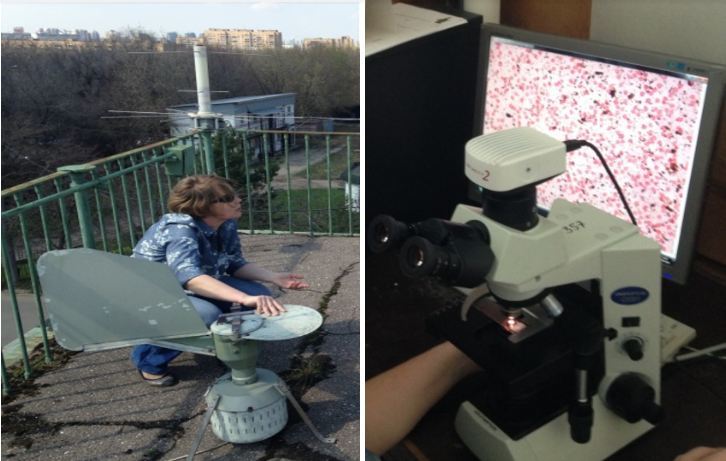
At a 400-fold increase, the specialist determined whose pollen was precisely that. After that, a report on the concentration of pollen in the air for yesterday was published.
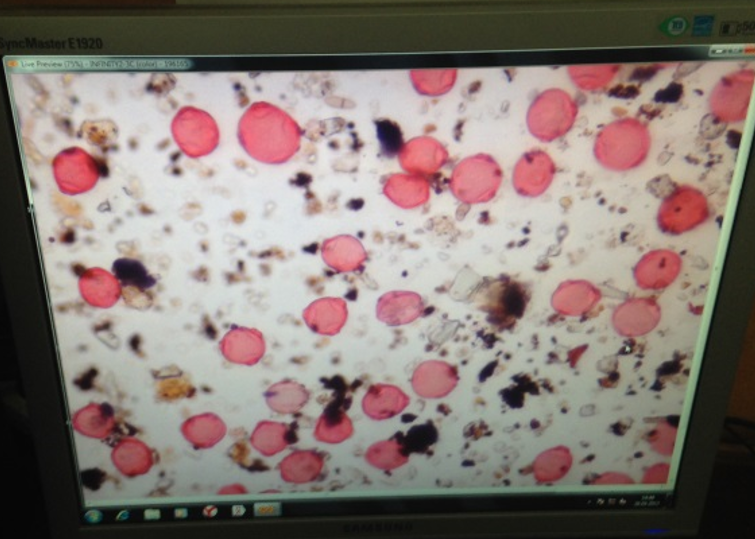
In the Pollen Club application, the data from biologists was supplemented with user data: observations of allergies about their state of health with reference to geo-location. The result was a risk map for allergy sufferers, updated in real time and taking into account the specific type of allergen.
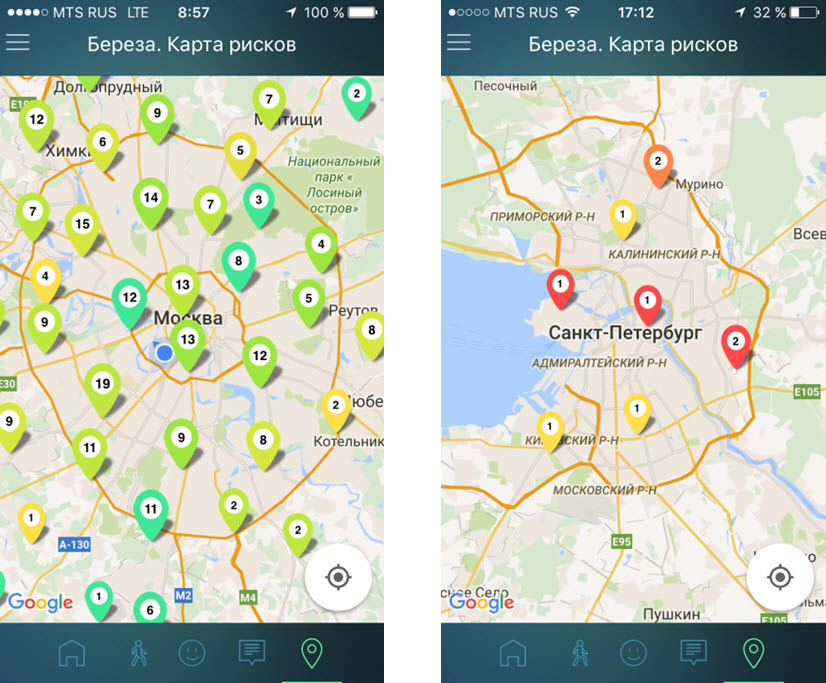
This service is called Pollen.Probki . Observations this year showed that user risk assessment correlates well with the concentration of allergens, which biologists have counted.

Pollen Club promises to publish a more detailed study on this topic, it will be interesting to see it. Also, the site administration promised detailed results of the pollen monitoring in 2016, analytical materials and prototypes of the new version of the Pollen Club mobile app. We look forward to all this with interest. For now, we are starting preparation for the allergen season 2017.
Allergy is a hypersensitive reaction of the body to harmless, in fact, substances (these can be proteins from pollen and wool, excretions of dust mites and insects, etc.). In this reaction, many links. The main ones are:
To overcome allergies need to be planned, from one link to another. Everything is used: both prophylactic agents, drugs for symptomatic treatment, and therapeutic therapies. Where to begin?
Winter is close, and at the moment the actions of allergies in chronological order are as follows:
We will write about the means of passive protection against allergies and anti-symptom drugs when their time comes. Now the most relevant topic is ASIT.
Three main groups of patients who will be helped by this therapy:
The main principle of allergen-specific immunotherapy: the deliberate introduction into the body of an allergen to which a person reacts. Doctors call such an allergen important . Only usually a person is in contact with the causative allergen is uncontrollable, and with ASIT - according to a clear schedule of the attending physician and strictly in therapeutic doses.
If everything worked out, then the result is the so-called allergen-specific desensitization , or tolerance . And if in a simple way, the body “gets used” to a specific allergen and stops responding to it. Speaking in medical language, the adaptation potential of the organism increases. It is like hardening: if you regularly drench with water, gradually lowering its temperature, the comfortable temperature range of the body expands. Figuratively speaking, the same happens with ASIT.
As the ASIT procedure progresses, the body reacts to the usual background doses of the allergen less and less, and after the course ends, it stops responding altogether. The period of time for which the patient is relieved of allergies is called remission . According to the site of the Institute of Vaccines and Serums. I.I. Mechnikov, remission after ASIT lasts up to 20 years, and 5% of patients generally get rid of allergies forever.
For the first time ASIT was used in 1911. In the first decades, the method was used intuitively, empirically. The first major leap in understanding the molecular cellular foundations of ASIT happened in the 60s. Then the Teruka couple (left) and Kimishegi (right) Ishizak discovered IgE antibodies .

We remind you: class E immunoglobulins, or just IgE, are the key “participants” of the allergic response, it is they who trigger the hypersensitive reaction to the allergen. Later, scientists found that when ASIT slows the growth of IgE in the blood. And after repeated courses of ASIT, the concentration of IgE antibodies even decreases, compared to baseline.
With the development of medicine and biology, it became clear that ASIT affects not only IgE, but also other links of the allergic reaction.
There are three main stages:
First of all, the doctor must carefully collect and examine the medical history of a particular patient. This is the starting point of any treatment.
After that, it is necessary to diagnose: determine the cause allergen and the body's sensitivity to it. This can be done with the help of skin allergies . This is when 15-20 different allergens drip onto the skin or even into small incisions on the skin. Where a visible reaction appeared (edema of a certain size, peeling, redness), there is a significant allergen.
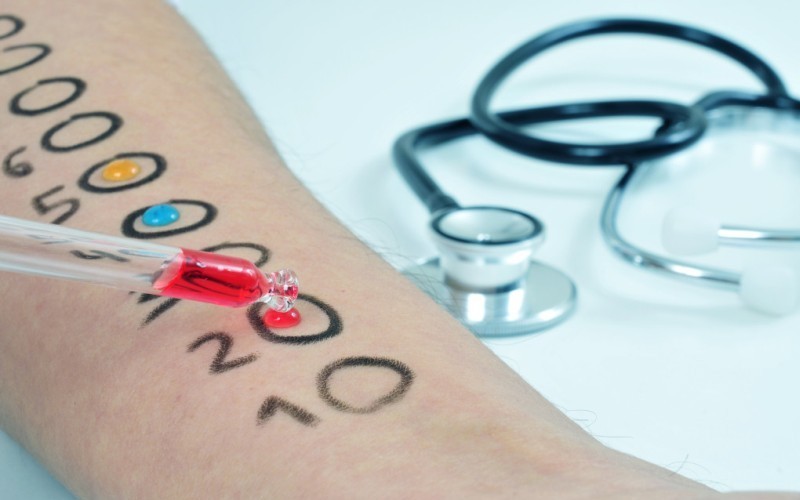
If a patient has a reaction to several allergens at once, mixtures of therapeutic allergens can be used for ASIT. Exception - mutually suppressing allergens. For example, pollen and allergens of household dust mites, cockroaches, mold fungi. In such a mixture, pollen allergens degrade and do not participate in therapy.
Skin tests are one of the most affordable methods for diagnosing allergies, but it has several limitations:
A more modern, but also more expensive way to diagnose - an allergy test for blood analysis .
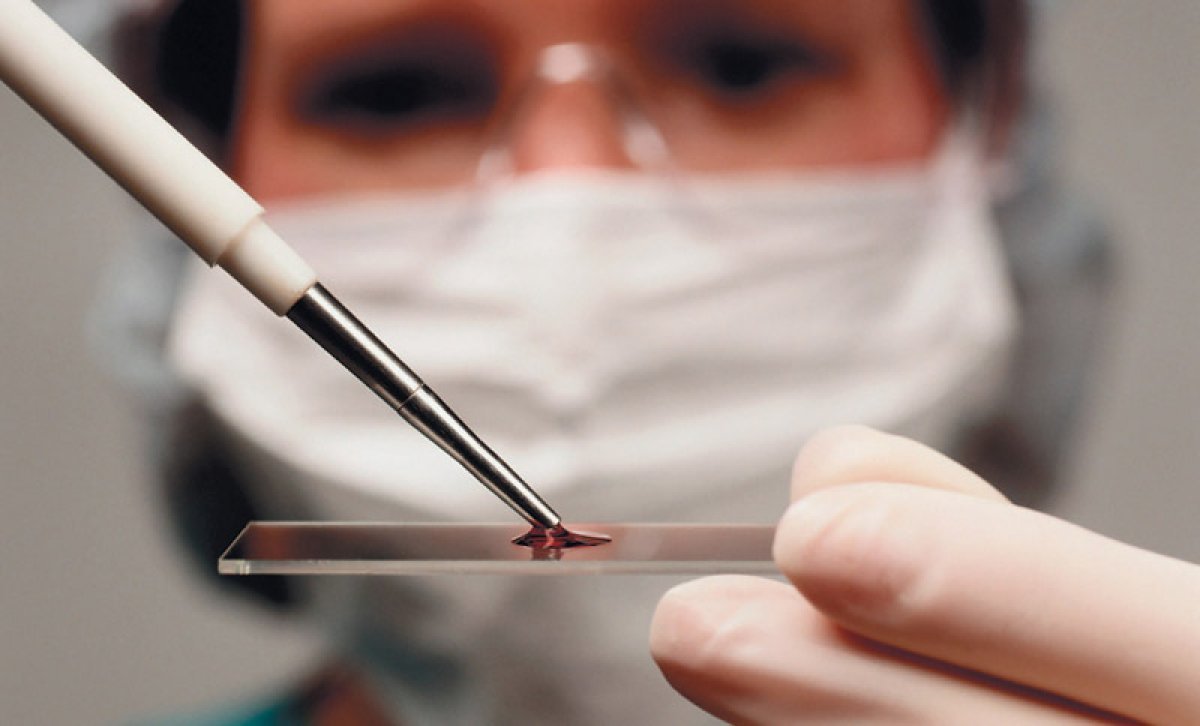
The doctor determines the level of immunoglobulins in the serum, and according to it - the level of danger and the nature of the development of allergies. Moreover, one sample can understand how the patient responds to 40 different allergens. For this there is a special scale with popular allergens.
There are other types of allergy tests, but now we will not go into details. The main thing is that the doctor determines by samples what the patient is allergic to and how much it is manifested. You can proceed to the second stage.
Immediately after the diagnosis, the gradual introduction of the purified allergen into the body begins. First, enter the minimum safe dose, and then gradually increase it to the maximum tolerated. All this is done to make the body resistant to this allergen, to achieve allergen-specific tolerance.
The classic method of introducing an allergen into the body is subcutaneous , or PKIT (SCIT, subcutaneous immunotherapy). Just a shot in the shoulder.
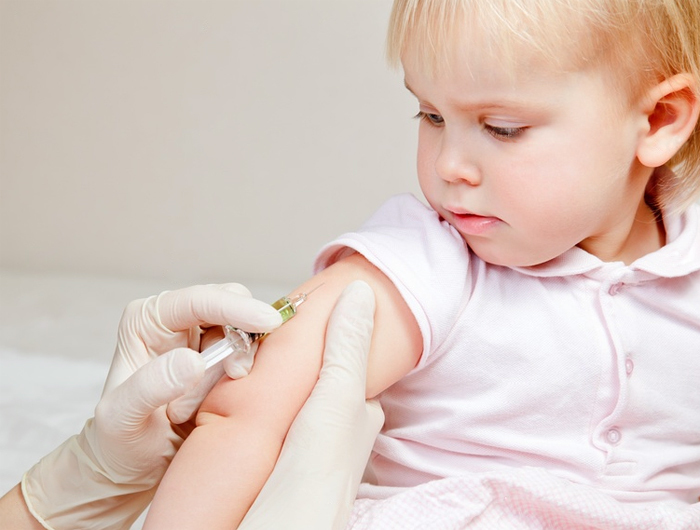
In the face of this girl, it is obvious that the shots are not suitable for everyone. In Russia, the ASIT injection form for children under 5 is generally prohibited. In pediatric practice, the non-injection method of ASIT is used - sublingual , or SLIT (SLIT, sublingual immunotherapy). In this case, the drug is not in a syringe, but in drops or tablets that need to be absorbed under the tongue.

Allergists and allergies continue to argue about what is best - PKIT or SLIT, but both methods work. The main thing is to follow the schedule of taking the drug with a significant allergen.
Usually, the first dose of the allergen is administered every day or every other day, then less and less. There is no standard scheme for ASIT, the doctor determines the dosage of the allergen and the schedule of admission on the basis of constant monitoring of the patient.
If there is very little time left before the flowering season, you can resort to one of the short-term ASIT schemes:
IMPORTANT: all short-term ASIT procedures are associated with large risks and are carried out only in specialized hospitals. And short-term ASIT can be carried out even while taking antihistamines.
So, tolerance to an allergen can be obtained according to different schemes and at different times. But in any case, to consolidate it you need to go through the last and longest stage of ASIT.
In order to consolidate the effect obtained from ASIT, after an active initiating phase, the patient must regularly take an allergen for a long time. The duration of the third stage depends on various reasons, but as a rule it lasts 3-5 years. And all this time, allergies need to come to the doctor every 2-4 weeks to receive the drug.
1-2 weeks before the start of the allergy season, therapy is paused. A repeated course of ASIT begins in the fall - after pollen disappears from the air with the causative allergen on board. If the allergy is not seasonal, year-round (for example, to household dust mites), then ASIT is carried out without strict reference to the time of year.
Over a hundred years of ASIT use, thousands of studies have been carried out: both in Russia and abroad. According to their results, it can be argued that in about 90% of cases of ASIT use, a positive therapeutic effect is achieved. And it could be all 100%, if all doctors and all patients strictly fulfilled their duties.
Doctors should:
Patients should:
If everything is done as it should, the therapy is guaranteed to help. As many allergists say, the ASIT procedure itself is wonderful and works very effectively. But it is discredited by an unfair attitude towards therapy by a doctor or patient.
A doctor pricks a patient with birch pollen. With this treatment, it is strictly forbidden to eat apples, carrots, pears and other products that cause cross-food allergies.
Option number 1: The doctor forgot to say this to the patient, but he does not understand why ASIT lasts for the second year, and the allergy does not go away.
Option number 2: The doctor said this to the patient, but he occasionally indulges himself with an apple and thereby negates the entire therapeutic effect.

Allergy sufferers are given shots or give a pill with an allergen. Naturally, there may be side effects. They are divided into two groups: local and systemic reactions.
Local reactions may occur at the injection site (in the case of SCIT) or the oral cavity (in the case of SLIT):
Systemic reactions can occur anywhere, without reference to the site of the allergen:
Italicized effects of moderate severity, which are controlled by appropriate treatment (antihistamine, inhalants). In bold italics - life-threatening effects. They require intensive therapy: a tourniquet above the injection site, an injection of epinephrine, intravenous administration of antihistamine and other drugs, in case of anaphylactic shock - emergency anti-shock measures in the intensive care unit.
Local reactions usually occur in the first 30 minutes after taking the allergen. System - in the first few minutes. It is assumed: the faster the systemic reaction appeared, the worse it is. But these reactions may occur an hour after taking the allergen. Therefore, the first 30-60 minutes after admission, the patient must remain in the hospital, in which case the doctor can assist him.
Asit courses are held by millions of allergy sufferers around the world. And, as the analysis shows, severe systemic reactions often occur in those countries where ASIT can be performed not only by allergists, but also by broad specialists (for example, family doctors). In the same place, where only narrow specialists with experience are allowed to ASIT, and the treatment itself is carried out in prepared medical institutions, systemic reactions are without serious consequences.
There are cases in which ASIT can not be carried out. Here are some of them:
In pregnancy, ASIT can take place. Starting a course during pregnancy is not worth it, but if it began before pregnancy, you can continue it and being “in position”.
Congratulations! You have mastered 15,000 characters. Now we briefly summarize the main points about ASIT:
But about the same theses in the video format:
ASIT with its hundred-year history is constantly being improved. Today, experts are working to improve the therapeutic properties of drugs for ASIT: so that they are both less allergenic and more immunogenic. So that an allergic reaction to pollen, dust or wool occurs less frequently, and “immunity” to allergens appears more easily.
Thanks for attention.
Once again, we note that ASIT is considered to be practically the only way to radically treat allergies. “Practically” - because in fact there are other, alternative or complementary, therapies. If this article "goes", we will write later in the blog and about them.
We remind you that our profile topic is the microclimate and air purification . Health and treatment of diseases associated with dirty air are related topics. We are also immersed in them: we are ready to give references to reliable sources and scientific publications on the topic, as well as answer questions in the comments. But for specific recommendations on treatment in any case it is worth contacting a specialist. In the case of ASIT, this is an allergist.
Used Books:
For reference: radical is the treatment of the causes of the disease, and not its symptoms. And allergen-specific immunotherapy is the main (and according to some sources is the only) method of radical treatment of allergy.

')
Prior to this, they wrote about allergenic pollen and its monitoring and the mechanism of the appearance of an allergic reaction . We advise you to refresh your memory and look through those articles again. Then it will be easier to read this.
To begin with - the results of the allergic season 2016
During the season pollen monitoring stations operated in Moscow, the Moscow Region and Ryazan. On them, biologists, using special traps, collected pollen from the air, pollen was used to extract pollen from debris and counted it under a microscope.
At a 400-fold increase, the specialist determined whose pollen was precisely that. After that, a report on the concentration of pollen in the air for yesterday was published.

In the Pollen Club application, the data from biologists was supplemented with user data: observations of allergies about their state of health with reference to geo-location. The result was a risk map for allergy sufferers, updated in real time and taking into account the specific type of allergen.

This service is called Pollen.Probki . Observations this year showed that user risk assessment correlates well with the concentration of allergens, which biologists have counted.

Pollen Club promises to publish a more detailed study on this topic, it will be interesting to see it. Also, the site administration promised detailed results of the pollen monitoring in 2016, analytical materials and prototypes of the new version of the Pollen Club mobile app. We look forward to all this with interest. For now, we are starting preparation for the allergen season 2017.
How to deal with allergies: general information
Allergy is a hypersensitive reaction of the body to harmless, in fact, substances (these can be proteins from pollen and wool, excretions of dust mites and insects, etc.). In this reaction, many links. The main ones are:
- The ingestion of the allergen in the body and the emergence of specific antibodies to it
- Activation of fat and other cells of the immune system
- Isolation of mast cells from signaling proteins, chemokines, which cause itching, coughing and other allergic symptoms
To overcome allergies need to be planned, from one link to another. Everything is used: both prophylactic agents, drugs for symptomatic treatment, and therapeutic therapies. Where to begin?
Winter is close, and at the moment the actions of allergies in chronological order are as follows:
- End of autumn - winter: start the procedure ASIT.
Why: start the "restructuring" of the immune system so that it learns to react to the allergen without pronounced allergic symptoms. - The end of winter - the beginning of spring: buy masks, a breather , a vacuum cleaner with HEPA filter and other passive protection.
Why: meet the flowering season fully armed, reduce contact with the allergen, reduce the risk of an allergic reaction. - The end of spring - the beginning of autumn: use antihistamine and hormonal preparations, preparations of kromolitic acid and other medicines for allergy symptoms.
Why: reduce the intensity of allergic symptoms, make life easier in the flowering season.
We will write about the means of passive protection against allergies and anti-symptom drugs when their time comes. Now the most relevant topic is ASIT.
For whom ASIT
Three main groups of patients who will be helped by this therapy:
- Patients with pollinosis (seasonal pollen allergy)
- Patients with allergies to house dust, animal dander and other household allergens
- Patients with severe reactions to insect bites
What is ASIT
The main principle of allergen-specific immunotherapy: the deliberate introduction into the body of an allergen to which a person reacts. Doctors call such an allergen important . Only usually a person is in contact with the causative allergen is uncontrollable, and with ASIT - according to a clear schedule of the attending physician and strictly in therapeutic doses.
The goal of ASIT is to get a different response at the exit to the same input signal (the causative allergen). Not an allergic response with a rash, tears and coughing, but an immune response without allergies.
If everything worked out, then the result is the so-called allergen-specific desensitization , or tolerance . And if in a simple way, the body “gets used” to a specific allergen and stops responding to it. Speaking in medical language, the adaptation potential of the organism increases. It is like hardening: if you regularly drench with water, gradually lowering its temperature, the comfortable temperature range of the body expands. Figuratively speaking, the same happens with ASIT.
As the ASIT procedure progresses, the body reacts to the usual background doses of the allergen less and less, and after the course ends, it stops responding altogether. The period of time for which the patient is relieved of allergies is called remission . According to the site of the Institute of Vaccines and Serums. I.I. Mechnikov, remission after ASIT lasts up to 20 years, and 5% of patients generally get rid of allergies forever.
How does ASIT work
For the first time ASIT was used in 1911. In the first decades, the method was used intuitively, empirically. The first major leap in understanding the molecular cellular foundations of ASIT happened in the 60s. Then the Teruka couple (left) and Kimishegi (right) Ishizak discovered IgE antibodies .

We remind you: class E immunoglobulins, or just IgE, are the key “participants” of the allergic response, it is they who trigger the hypersensitive reaction to the allergen. Later, scientists found that when ASIT slows the growth of IgE in the blood. And after repeated courses of ASIT, the concentration of IgE antibodies even decreases, compared to baseline.
With the development of medicine and biology, it became clear that ASIT affects not only IgE, but also other links of the allergic reaction.
The main effects of ASIT
- The level of IgE decreases.
- “Blocking” IgG antibodies are produced that bind the allergen, but do not trigger the allergic response. The more allergen molecules binds to IgG, the less they will get on IgE and the lower the probability of an allergic reaction.
- In the tissues there are less mast cells (they emit chemokines - substances that cause allergy symptoms). Less mast cells - less chemokines - fewer symptoms.
- In addition, the mast cells themselves after ASIT release chemokines more slowly, this also facilitates the allergic reaction.
- ASIT affects other immune cells: Th1 and Th2 . In a nutshell: the first ones suppress the allergic response, the second, on the contrary, contribute to its development. Typically, these cells are in dynamic equilibrium, but with ASIT, Th1 cells become larger, which means that the allergic response becomes weaker.
How does the treatment of ASIT
There are three main stages:
- Preparation: Allergy Diagnosis
- Initiating phase: development of allergen specific tolerance
- Supporting phase: consolidation of the achieved effect
Stage One: Preparation
First of all, the doctor must carefully collect and examine the medical history of a particular patient. This is the starting point of any treatment.
After that, it is necessary to diagnose: determine the cause allergen and the body's sensitivity to it. This can be done with the help of skin allergies . This is when 15-20 different allergens drip onto the skin or even into small incisions on the skin. Where a visible reaction appeared (edema of a certain size, peeling, redness), there is a significant allergen.

If a patient has a reaction to several allergens at once, mixtures of therapeutic allergens can be used for ASIT. Exception - mutually suppressing allergens. For example, pollen and allergens of household dust mites, cockroaches, mold fungi. In such a mixture, pollen allergens degrade and do not participate in therapy.
Skin tests are one of the most affordable methods for diagnosing allergies, but it has several limitations:
- The patient must be older than 5 years. In children, the body can naturally change reactions to many allergens. Therefore, there is a high risk of a false-negative reaction to the sample.
- It should be 30 days since the last allergic exacerbation.
- It should be 1-2 weeks since the last administration of an antihistamine drug (the term depends on the specific drug). If the “antihistamine” is still in the blood, a false-negative reaction is also possible.
A more modern, but also more expensive way to diagnose - an allergy test for blood analysis .

The doctor determines the level of immunoglobulins in the serum, and according to it - the level of danger and the nature of the development of allergies. Moreover, one sample can understand how the patient responds to 40 different allergens. For this there is a special scale with popular allergens.
There are other types of allergy tests, but now we will not go into details. The main thing is that the doctor determines by samples what the patient is allergic to and how much it is manifested. You can proceed to the second stage.
Stage Two: Initiation Phase
Immediately after the diagnosis, the gradual introduction of the purified allergen into the body begins. First, enter the minimum safe dose, and then gradually increase it to the maximum tolerated. All this is done to make the body resistant to this allergen, to achieve allergen-specific tolerance.
The classic method of introducing an allergen into the body is subcutaneous , or PKIT (SCIT, subcutaneous immunotherapy). Just a shot in the shoulder.

In the face of this girl, it is obvious that the shots are not suitable for everyone. In Russia, the ASIT injection form for children under 5 is generally prohibited. In pediatric practice, the non-injection method of ASIT is used - sublingual , or SLIT (SLIT, sublingual immunotherapy). In this case, the drug is not in a syringe, but in drops or tablets that need to be absorbed under the tongue.

Allergists and allergies continue to argue about what is best - PKIT or SLIT, but both methods work. The main thing is to follow the schedule of taking the drug with a significant allergen.
Usually, the first dose of the allergen is administered every day or every other day, then less and less. There is no standard scheme for ASIT, the doctor determines the dosage of the allergen and the schedule of admission on the basis of constant monitoring of the patient.
Typically, the initiation phase takes 3-6 months of regular allergen administration. Antihistamine medication cannot be used at this time. That is why ASIT should begin in autumn and winter, when an allergic person can live without antihistamines.
If there is very little time left before the flowering season, you can resort to one of the short-term ASIT schemes:
- Accelerated: with subcutaneous injections of the allergen twice or even three times a day, the course lasts 10-15 days.
- "Fulminant": for 3 days after 3 hours, the patient is subcutaneously injected with the drug in equal doses, along with adrenaline.
- "Shock" method: injections every 2 hours, 50 to 50 with adrenaline, and all this within one day.
IMPORTANT: all short-term ASIT procedures are associated with large risks and are carried out only in specialized hospitals. And short-term ASIT can be carried out even while taking antihistamines.
So, tolerance to an allergen can be obtained according to different schemes and at different times. But in any case, to consolidate it you need to go through the last and longest stage of ASIT.
Stage Three: Supporting Phase
In order to consolidate the effect obtained from ASIT, after an active initiating phase, the patient must regularly take an allergen for a long time. The duration of the third stage depends on various reasons, but as a rule it lasts 3-5 years. And all this time, allergies need to come to the doctor every 2-4 weeks to receive the drug.
As a maintenance dose, choose the maximum well-tolerated dose of the allergen.
1-2 weeks before the start of the allergy season, therapy is paused. A repeated course of ASIT begins in the fall - after pollen disappears from the air with the causative allergen on board. If the allergy is not seasonal, year-round (for example, to household dust mites), then ASIT is carried out without strict reference to the time of year.
The effectiveness of ASIT
Over a hundred years of ASIT use, thousands of studies have been carried out: both in Russia and abroad. According to their results, it can be argued that in about 90% of cases of ASIT use, a positive therapeutic effect is achieved. And it could be all 100%, if all doctors and all patients strictly fulfilled their duties.
Doctors should:
- Diagnose allergies with a well-defined IgE-dependent nature of the disease.
- Choose the causative allergen for each patient
- Use commercial standardized treatment forms of allergens
- Correctly set up the patient for a long and hard work
Patients should:
- To come to receptions strictly according to the schedule: the first 3-6 months 1-2 times a week, and then another 3-5 years once a week or once a month
- Be sure to complete the treatment, even if it takes 5 years
- During the whole treatment, follow a diet, follow the hypoallergenic conditions and strictly follow all the instructions of the doctor.
If everything is done as it should, the therapy is guaranteed to help. As many allergists say, the ASIT procedure itself is wonderful and works very effectively. But it is discredited by an unfair attitude towards therapy by a doctor or patient.
Example
A doctor pricks a patient with birch pollen. With this treatment, it is strictly forbidden to eat apples, carrots, pears and other products that cause cross-food allergies.
Option number 1: The doctor forgot to say this to the patient, but he does not understand why ASIT lasts for the second year, and the allergy does not go away.
Option number 2: The doctor said this to the patient, but he occasionally indulges himself with an apple and thereby negates the entire therapeutic effect.

ASIT Security
Allergy sufferers are given shots or give a pill with an allergen. Naturally, there may be side effects. They are divided into two groups: local and systemic reactions.
Local reactions may occur at the injection site (in the case of SCIT) or the oral cavity (in the case of SLIT):
- Redness
- Itching
- Edema
Systemic reactions can occur anywhere, without reference to the site of the allergen:
- Headache
- Joint pain
- Feeling of discomfort
- Mild manifestations of rhinitis or bronchial asthma
- Hives
- Quincke’s edema
- Violation of bronchial patency
- Anaphylactic shock
- Edema of the vital organs
Italicized effects of moderate severity, which are controlled by appropriate treatment (antihistamine, inhalants). In bold italics - life-threatening effects. They require intensive therapy: a tourniquet above the injection site, an injection of epinephrine, intravenous administration of antihistamine and other drugs, in case of anaphylactic shock - emergency anti-shock measures in the intensive care unit.
Local reactions usually occur in the first 30 minutes after taking the allergen. System - in the first few minutes. It is assumed: the faster the systemic reaction appeared, the worse it is. But these reactions may occur an hour after taking the allergen. Therefore, the first 30-60 minutes after admission, the patient must remain in the hospital, in which case the doctor can assist him.
A local reaction is a sign that the dose of the allergen is chosen incorrectly and next time it should be reduced. A systemic reaction indicates more serious deviations from the standards of ASIT.
Asit courses are held by millions of allergy sufferers around the world. And, as the analysis shows, severe systemic reactions often occur in those countries where ASIT can be performed not only by allergists, but also by broad specialists (for example, family doctors). In the same place, where only narrow specialists with experience are allowed to ASIT, and the treatment itself is carried out in prepared medical institutions, systemic reactions are without serious consequences.
Contraindications ASIT
There are cases in which ASIT can not be carried out. Here are some of them:
- Severe immunopathological conditions and immunodeficiency
- Oncological diseases
- Severe mental disorders
- Severe bronchial asthma that cannot be controlled by pharmacotherapy
- Cardiovascular diseases that may cause complications when using adrenaline (epinephrine)
In pregnancy, ASIT can take place. Starting a course during pregnancy is not worth it, but if it began before pregnancy, you can continue it and being “in position”.
Conclusion
Congratulations! You have mastered 15,000 characters. Now we briefly summarize the main points about ASIT:
- It is like hardening for allergies. The allergen can still trigger a hypersensitive reaction, but it becomes harder to do. And in 5% of cases it is completely impossible.
- This is a long procedure (3-5 years). And during all this time you can not relax: neither the patient nor the doctor.
- For pollinosis, therapy should be carried out between flowering seasons. From the end of spring to the beginning of autumn there is a break in therapy so as not to overload the immune system with allergens. If you are allergic to dust, ASIT is performed at any time of the year.
- This is an effective therapy, albeit with side effects. If you follow all the rules for its implementation and undergo treatment under the supervision of a specialist allergist in a specialized allergology unit, there is nothing to worry about.
- This therapy is not for everyone. Before you start the course ASIT, you must be 100% sure that you are not in one of the risk groups.
But about the same theses in the video format:
ASIT with its hundred-year history is constantly being improved. Today, experts are working to improve the therapeutic properties of drugs for ASIT: so that they are both less allergenic and more immunogenic. So that an allergic reaction to pollen, dust or wool occurs less frequently, and “immunity” to allergens appears more easily.
Thanks for attention.
Once again, we note that ASIT is considered to be practically the only way to radically treat allergies. “Practically” - because in fact there are other, alternative or complementary, therapies. If this article "goes", we will write later in the blog and about them.
We remind you that our profile topic is the microclimate and air purification . Health and treatment of diseases associated with dirty air are related topics. We are also immersed in them: we are ready to give references to reliable sources and scientific publications on the topic, as well as answer questions in the comments. But for specific recommendations on treatment in any case it is worth contacting a specialist. In the case of ASIT, this is an allergist.
Used Books:
- Synergy of data of scientists and participants of the Pollen Club project
- Research Institute of Vaccines and Serums. I.I. Mechnikova: Questions and Answers
- Bulletin of biotechnology and physico-chemical biology named after Yu.A. Ovchinnikova: Molecular biological basis of allergen immunotherapy
- The use of allergen-specific immunotherapy in the treatment of atopic diseases
Source: https://habr.com/ru/post/399447/
All Articles